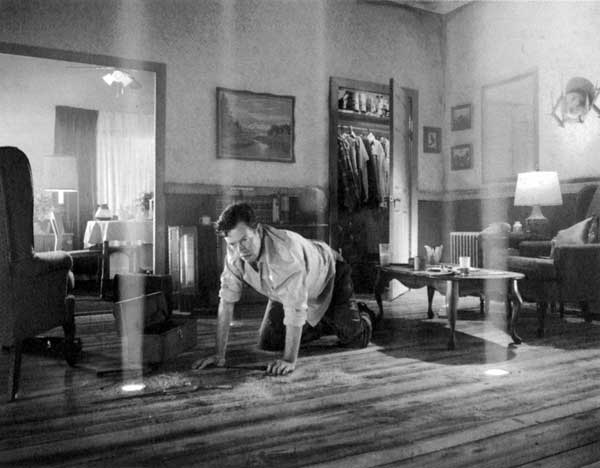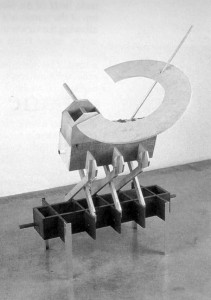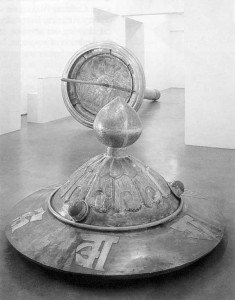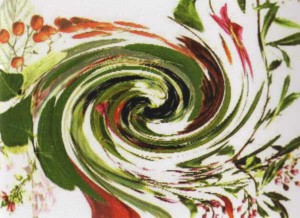For ‘Tema Celeste’ magazine
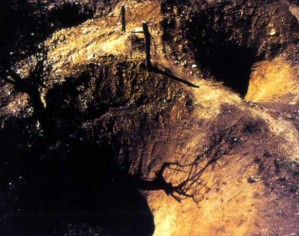
To go to work, Diego Perrone goes home. That is, he casts the central characters in his photographs and short videos from among the residents of his hometown in Italy. As a result, an air both of intimacy and rural languor characterizes the work. For his first US solo exhibition, Perrone showed several videos and “I Pensatori di Buchi” (The Thinkers of Holes), a series of photographs featuring a plot of land marked with cavernous holes. The images position men, usually nude, in various acrobatic postures near recently dug circular pits. It has been raining, the bodies are wet, and rivulets of mud run down into the ominous darkness. Holes in the ground usually signal burial, but in this case the men’s contortions suggest a birth out of the primordial ooze.
Although the photographs occupied the entire front gallery, the videos in the back room were the highlight of the show. They ranged in style from an animated cartoon about a group of young boys in a playground, who punch, push, and taunt one another in the name of fun, to a scene shot with two actors in a parked car at night. In this disturbing drama, a man and woman embrace lovingly and then, with her full cooperation, he methodically cuts off her ear with a razor. In another video, an elderly man and woman sit side by side, doing and saying nothing while turtles crawl around at their feet.
In his modern-day version of the three ages of man, Perrone documents the cruelty of children, creates a metaphor for the disfiguring pain of adult relationships, and wisecracks about the slow pace of old age. The artist spotlights ordinary people who deal with extraordinary situations. In a video from 1999, also included in the exhibition, a mentally retarded man makes frustrated attempts at building a shelter from a pile of bamboo sticks. His disappointing results are less interesting than his quiet concentration and hesitant strategizing, two working methods that Perrone himself seems to employ to captivating effect.
